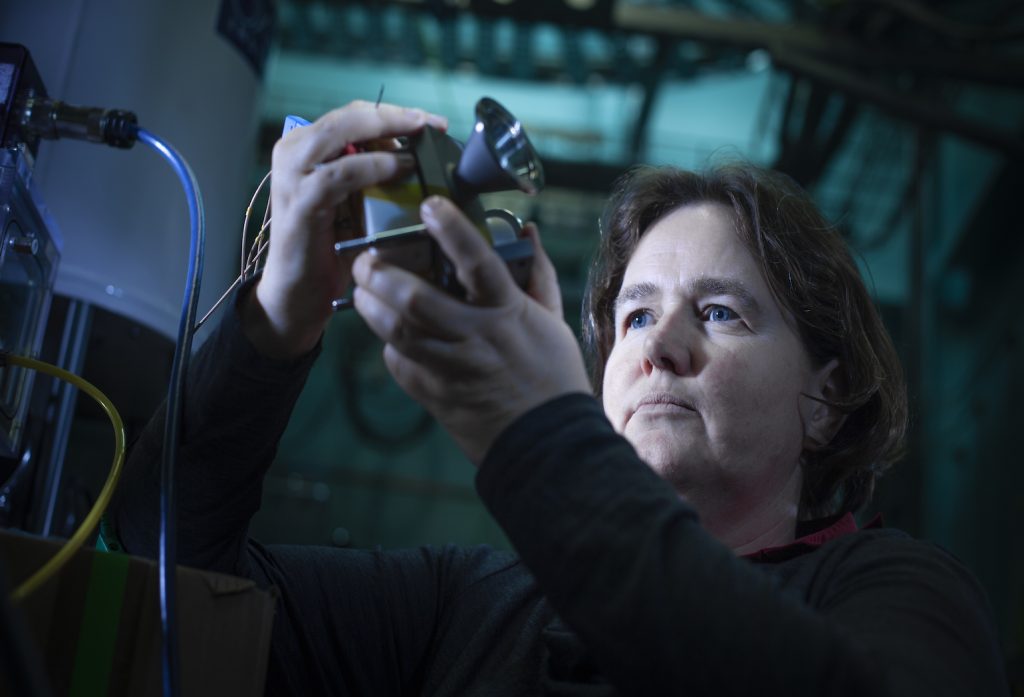From changing surfaces to repel viruses and extending the life of naval fleets to printing titanium structures using kinetic energy, SEAM works on transformative surface engineering.
Forget what lies beneath, engineers and scientists focus on the surface at the ARC Training Centre in Surface Engineering for Advanced Materials (SEAM). Each of the centre’s 13 diverse research projects has significant potential for the industry.
Housed and located at Swinburne University of Technology, SEAM is a top Australian R&D facility for surface engineering, where scientists, engineers and industry come together to innovate and advance Australia’s manufacturing capabilities.
“Surface engineering is important because we can change the functional properties of a surface without altering its underlying material strength or purpose,” says Dr Rosalie Hocking, a chemist and materials scientist at SEAM.
“That means we can protect materials from corrosion, or give surfaces new properties to act as a catalyst or repel or attract water. It’s critical in manufacturing processes. For example, if you want to keep a surface robust for longer, you have to understand what’s happening at the interface.”
Research areas at SEAM include biomaterials, graphene layering, high-temperature coatings and laser metal deposition for parts repair. There is also a strong focus on Industry 4.0 manufacturing processes, ranging from thin films to thick coatings and additive layered materials. And, with 28 industry partners and affiliate organisations, SEAM offers a world of opportunities for future surface engineers and technologists to gain practical experience.
Hocking is the deputy department chair of chemistry and biotechnology at Swinburne and a recipient of the Vice-Chancellor’s Women in STEM Research Fellowship. She doesn’t simply work on surfaces, she works on the surfaces of tools that penetrate surfaces. She is currently partnering with Sutton Tools to explore and develop more robust edges for cutting tools such as industrial drill bits.
Finding the right electro-polishing process and thin resistant coating for these surfaces can represent millions of dollars in savings to users of these drill bits. The potential applications for this research are significant across the aviation and automotive sectors or even down to providing stronger tools for DIY customers.
Hocking is a big believer in collaboration between engineers and scientists. Beyond their respective areas of expertise, the different mindsets they bring can yield great results. She often brings engineers along to the Australian Synchrotron to share how new materials work and, even better, to understand why sometimes they don’t.
“Engineers don’t always think about the molecular level of the surfaces or materials they work with,” she says.
“I like to bring my colleagues to the Synchrotron to use the advanced characterization tools to provide insights key for new products. We have made good use of their diverse X-ray tool kit – from making 3D renderings of coated materials to understanding the molecular-level structure of thin-film coatings. By sharing our approach and thinking about these challenges, we create the opportunity for more robust innovation to take place, which is the key for new business.”
Engineers at SEAM are working on exciting projects. Dr Andrew Ang is a senior research engineer and part of the SEAM Executive Committee. His expertise in thermal spray, cold spray coatings and laser metal deposition sees him actively involved across five research projects at SEAM.
One project with Titomic and the Australian Nuclear Science and Technology Organisation explores a new 3D printing process known as Titomic Kinetic Fusion technology. This unique proprietary method relies on kinetic energy to bond metallic materials for 3D printing rather than thermal energy.
“It might seem like black magic to some, but there is deep scientific understanding in using kinetic energy to create 3D structures without melting the raw material or feedstock. There’s less wastage, and the process preserves the properties of the original material without introducing oxidation or material phase changes,” says Ang.
Ang agrees with Hocking about the increased levels of innovation that can occur when engineers and scientists work closely together.
“As engineers, we often want to make things and quickly solve a problem. We don’t always want to take the time to look at the intrinsic reactions or fundamental science that scientists do. We’ve seen how collaboratively bringing these perspectives together can lead to remarkable levels of industrial innovation,” he says.
All of the partners at SEAM are unified by their purpose to develop the next generation of scientists, researchers and engineers for the industry. Beyond the existing projects, there has been a groundswell of industry interest in what the teams are already achieving. This is leading to new research partnerships and training opportunities, which will help to meet the growing demand for talent in surface engineering.
If you’re interested in partnering with SEAM or want to find out more information about research projects and training opportunities, please get in touch with the team at SEAM.

